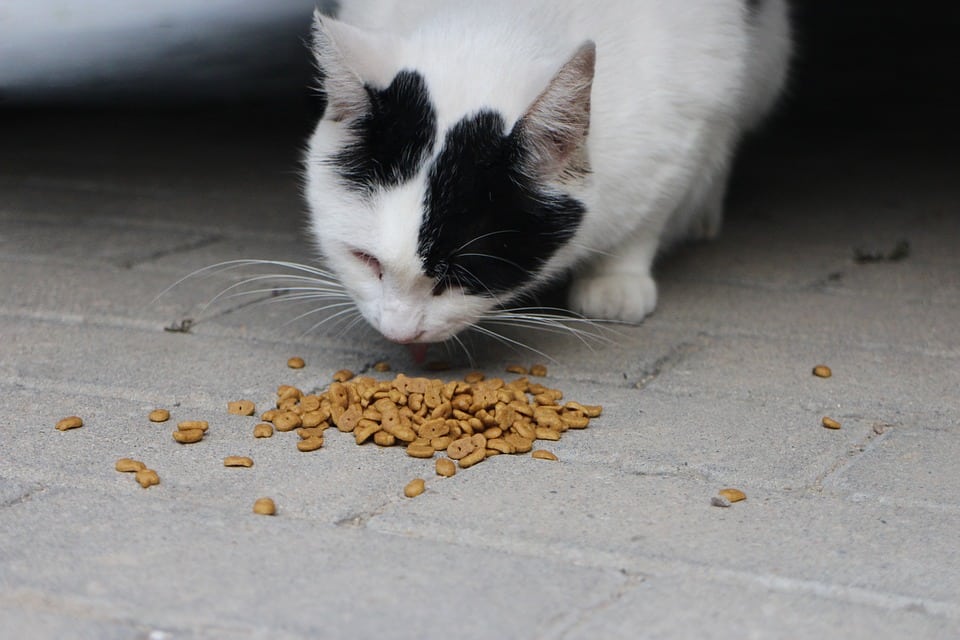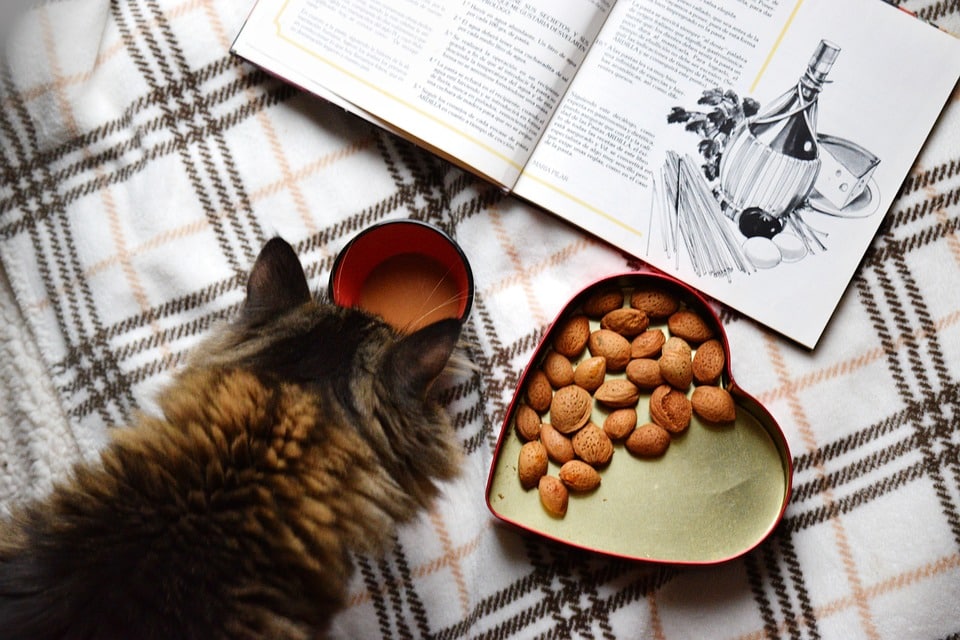
Can cats eat expired food? Expiry date of cat food Expiry date of cat food
Many people are used to taking home more than 10kg of cat food on a single trip because of the size of the packs and the price. However, the freshness of food deteriorates over time and the nutritional value of food decreases with prolonged storage. The daily opening and closing of large packs of food can easily cause oxidation and moisture due to contact with air and moisture, making it appear that the food is softened and not fresh until half the pack has been eaten.
It is therefore advisable to pay attention to the shelf life of your pet’s food and to buy in appropriate quantities to ensure that your pet is eating fresh and nutritionally balanced food.
In this article, we’ll look at how to store dry food. After reading this article, you will know if you can still eat your pet’s kibble after it has expired!
Related questions in this article:
Can I eat cat food after it has expired?
How long can I keep cat food?
Can cats eat expired food?
Can cats eat canned cat food after the expiry date?
Cat food expiry – How to know when cat food expires?
Does cat food expire?
Cat food is usually packaged in large containers and can easily deteriorate if not stored properly.
Because cat food is high in protein, if it is not stored properly and exposed to moisture, it can become mouldy, wormy, produce falciparum toxin, etc.
If the spoilage goes undetected (difficult to see with the naked eye) and is accidentally fed to the cat, it can cause serious health problems for the cat.
Therefore, in humid weather, extra attention should be paid to the preservation of food to ensure that it is fresh and safe.
Generally, there are a number of ways in which you can tell if a cat’s food is out of date:
- ” Expiry date”: The expiration date of cat food is usually stated on the packaging and should not exceed the shelf life.
- Appearance: Expired food may be mouldy or rotten, have black or green spots or a foul odour, or the entire package may be softened.
- Taste: Expired feed may be odourless or tasteless.
- Nutritional content: Expired feed may lose its nutritional value.
- Inspection: Feed can be sent for inspection to confirm if it is out of date or spoiled.
What happens if your cat eats expired food?
As mentioned above, spoiled cat food can contain mould, worms or Aspergillus flavus.
What is Aspergillus flavus? If a cat ingests a large amount of cat food containing Aspergillus flavus in a short period of time, it is likely to have an acute toxic reaction which can be severe enough to cause liver damage, necrosis and ultimately death.
Because cat food is a dry food, it is usually dark in colour and strong in flavour, so if it is slightly mouldy, it is not usually easy to detect.
Therefore, in addition to careful inspection during feeding, it is important to keep the food in good condition.
Can cats eat out-of-date cat food?
Although cat food does not necessarily become mouldy or smelly after the ‘best before’ date, it is still labelled with a ‘use by’ date and a ‘sell by’ date, which are the results of tests carried out by the manufacturer, so it can still be harmful to your cat’s health if used for a long time.

How to preserve your cat’s food
- Buy the appropriate pack size and buy approximately the same number of packs for your cat’s consumption rate. (We recommend one to two months’ supply).
- If you buy oversized packs, divide them into small bags and make sure the container is dehumidified and sealed.
- Avoid pouring food directly into an unwashed bucket (it is recommended to empty and clean the food container each time before pouring into a new one).
- When storing feed in cleaned containers again, make sure they are completely dry and free of moisture. 5. Remember to mix old and new food in storage bins and store them separately.
- When cleaning the storage bins, try to avoid the use of vegetable rags, brushes and other tools that leave scratches to prevent mould growth in the scratches. (The use of a sponge is recommended).
. Storage environment must avoid excessive changes in temperature and humidity, stored in a dry and cool place is best. (It is best not to put the feed bag directly on the ground to avoid the infestation of insect crisis). - Do not store dry food in containers that are too large and avoid frequent opening and closing to avoid deterioration.
- Store dry cat food bags in a cool, dry place below 100°F (38°C). This will prevent vitamin degradation and oxidation of oils and fats, which can cause spoilage.
- The best flavour is retained by storing cat food in its original bag, most of which have an inner bag to prevent oxidation of fats and oils.
If stored at 120°F (48°C) for more than 48 hours, vitamin degradation or spoilage will occur more rapidly.
Finally, it is important to remember that the shelf life on the feed package refers to the unopened shelf life.
Q&A
Can I store canned cat food in my garage?
It is not recommended to store cat or dog food in an environment where the temperature cannot be controlled – such as a garage or outdoors (store in a cool, dry environment).
Store canned cat food in a temperature range of 50-100°F (10-38°C) before opening. (Do not freeze cans as this may change the taste and texture of the food.)
Should I use plastic storage containers for cat food?
Many cat owners prefer to store dry food from pouches in other containers. Studies have reported that storing dry food in a variety of plastic containers (garbage cans, ziplock bags, trash or kitchen bags, rubber/plastic containers, plastic buckets, etc.) can cause the odour and taste of dry food to escape and affect the flavour of the food.
Sealed zip-lock bags, rubbish bags and such plastic bags do not prevent fat from accumulating outside the bag. However, dry food can be stored in clean metal containers (small metal cans, metal dustbins, etc.). If you are more accustomed to using a storage container, place the entire bag of food in the storage container as is for optimum storage.
How do I store opened tins of cat food?
Opened tins of cat food should be stored in the fridge to prevent loss of moisture, to keep them out of the air as much as possible and to prevent odours from spreading to other foods. The best way to store them is to use an edible plastic lid that fits snugly over the top of the can to prevent moisture loss and odour transfer. If plastic lids are not available, plastic wrap works well to prevent moisture loss, air exposure and odour transfer.
Sealed zip-lock bags are effective in preventing moisture loss, but are not effective in preventing oxidation and odour dispersion.
How long will unopened cat food keep?
The shelf life of unopened cat food can vary depending on the manufacturer and the product.
Generally speaking, unopened dry cat food will keep for about a year and liquid food for about six months.
However, this depends on how the food is stored. It should be stored in a dry, cool place at the right temperature, away from direct sunlight and high temperatures.
It is also a good idea to keep an eye on the shelf life of your pet’s food to ensure that it is fresh and nutritionally balanced.
What is the risk of diabetes in cats due to high carbohydrate content in dry cat food?
Cats are carnivores. This means that a cat’s diet should consist mainly of protein, fat and water. Most dry cat foods are too high in carbohydrates and should be chosen carefully. A carbohydrate ratio of more than 30% is a very unnatural combination for a cat’s diet. Eating a large amount of carbohydrate over a long period of time means that your cat has less animal protein to eat, and some of the amino acids in animal protein are essential amino acids, which your cat can only get from the outside. If there is a deficiency over time, the body can become malnourished and ill.
Does the carbohydrate content of dry cat food seem too high?
In general, the carbohydrate ratio of dry cat food exceeds the cat’s requirements. This is because the dry food process requires the addition of some starch to help compress the food into shape. Therefore, if you are feeding dry food for a long period of time, it is recommended that you choose a brand with a high protein ratio for better health. Where possible, cats should be fed a canned or homemade food as their main source of nutrition, as this is closer to their natural diet and will be healthier.
How long can I leave dry food in my cat’s bowl? How long can tinned cat food last once opened?
How long will canned food keep once opened? There is no specific shelf life for dry cat or dog food, as long as it is stored in a cool, dry place out of direct sunlight and not contaminated by insects or other pests. However, we recommend that you wash your cat’s bowl daily and replace it with fresh dry food.
Canned cat food should be emptied from your cat’s or dog’s bowl when the ambient temperature exceeds 50°F (38°C) and any uneaten canned food should be emptied within 4 hours.
Opened tins should be stored in the refrigerator at 40-45°F (4-7°C) for up to 5-7 days.
